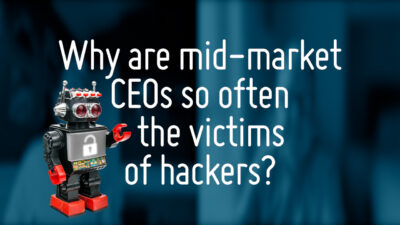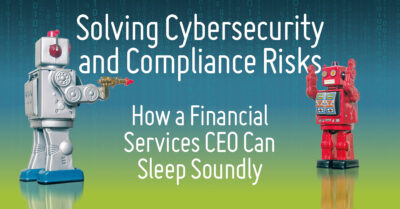Why Are CEOs Often Hacking Victims?
Our latest video presents a cautionary cybersecurity tale for mid-market business leaders. We usually imagine a hacking victim as someone...
Read moreOur latest video presents a cautionary cybersecurity tale for mid-market business leaders. We usually imagine a hacking victim as someone...
Read moreIn recent months we’ve seen a rash of cyberattacks against big businesses, with potentially disastrous consequences: A ransomware attack shut...
Read moreLet’s be real. Cybersecurity and compliance should be ongoing concerns for CEOs. But they shouldn’t keep you up at night....
Read moreSome decades ago, a journalist asked UK Prime Minister Harold Macmillan what was the greatest challenge to his administration. His...
Read moreWhen the global movers and shakers gathered at the World Economic Forum earlier this year, they got a unpleasant surprise...
Read moreSuddenly the office is closed, and everyone’s working from home. The IT team is coping, but you’ve got nagging doubts...
Read moreEvery CEO knows that customer information is a crucial asset. And how you manage customer relationships is vital. So of...
Read moreDue to a cyberattack, Travelex, the world’s largest foreign exchange bureau, has been paralyzed for weeks. The reputational and financial...
Read moreThe second of our two-part report providing busy CEOs with a template for mitigating the stresses and risks of cyber...
Read morePlain English board-level briefings focused on technology strategies to deliver competitive advantage and business success.
You can unsubscribe at any time.
Call us on 0203 020 1864 with any questions.
Graeme Freeman
Co-Founder and Director
Plain English board-level briefings focused on technology strategies to deliver competitive advantage and business success.
You can unsubscribe at any time.
Call us on 0203 020 1864 with any questions.








